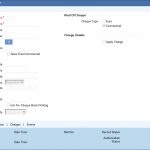Content

The amount of premium amortized for the last payment is equal to the balance in the premium on bonds payable account. See Table 4 for interest expense and carrying value calculations over the life of the bonds using the effective interest method of amortizing the premium. At maturity, the General Journal entry to record the principal repayment is shown in the entry that follows Table 4 .
Also known as book value, the carrying value of a bond represents the actual amount that a company owes the bondholder at any given time. Par value, also known as nominal or original value, is the face value of a bond or the value of a stock certificate, as stated in the corporate the balance in unamortized discount on bonds payable charter. Emilie is a Certified Accountant and Banker with Master’s in Business and 15 years of experience in finance and accounting from large corporates and banks, as well as fast-growing start-ups. C) should be reported in the Paid-in Capital section of the balance sheet.
Bonds Issued at a Discount
Bonds can be sold at a discount or a premium, depending on the market. It is calculated based on the amount of the bond premium or discount, the elapsed time in the term of the bond and the amount of amortization that has already been recorded. When the next entries are made, the company will have to determine how much of the premium or discount to amortized. This amount will reduce the balance of either the discount or premium on bonds payable.
The effective-interest method records interest expense based on the carrying value of the bond and the amount of interest paid. Both methods record the same amount of interest over the term of the bond. However, the difference is in how much is recorded each period and how it is calculated. Consider the company that is selling the $200,000, 10%, 5 year bonds. Suppose investors can get a better return on their investment than 10 percent because market interest rates are high. They won’t want to purchase the bond for the face value because they could make more money with a different investment.
Amortization of Bond Premiums and Bond Discounts:
Because of the benefit to the investor , the issuer is able to issue the bonds at a lower interest rate than would be the case for a straight bond. Most lessees do not like to report leases on their balance sheets because the lease liability increases the company’s total liabilities. In most lease contracts, a periodic payment is made by the lessee and is recorded as rent expense.
- Lighting Process, Inc. issues $10,000 ten‐year bonds, with a coupon interest rate of 9% and semiannual interest payments payable on June 30 and Dec. 31, issued on July 1 when the market interest rate is 10%.
- Additionally, bonds that are issued at a discount will be those with a market rate that is greater than the bonds stated rate.
- Two years of amortization have been recorded, and eight years of amortization remain.
- To further explain, the interest amount on the $1,000, 8% bond is $40 every six months.
- It can be calculated in various ways such as the effective interest rate method or the straight-line amortization method.
- To calculate the carrying value of a bond, you will need to know how much of the premium or discount has been amortized, which will depend on the time elapsed since the issue date.
Should the balance in discount on bonds payable be reported?
Reporting of discount or premium on bonds payable on the financial statements. The discount on bonds payable should be recorded in the balance sheet by directly subtracting it from the bond's face value. However, the premium on bonds payable should be recorded by adding it to the maturity amount of the bond.